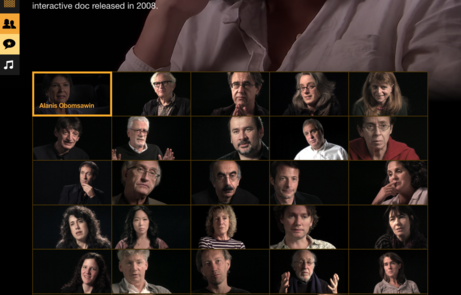
Trying to emulate those successful paintings by applying a "style" was mildly successful, but always felt "off," and was obviously not the way to go, nor seemed to be the way "they" (the painters I was studying) had gone. In fact, it became increasingly evident that the more "potent" the paintings, the more they seemed to not respect the "rules." Yet, and this is very significant, the painters that were identified as the greatest (Rembrandt, Vélasquez, Vermeer, Chardin, Cézanne, just to name a few) were not always respecting the "norms" of that theory ("solid objects existing in empty space"). Most painters whom we, as students, were encouraged to study, seemed to function with a great deal of ease within the confines of that system of belief, a system with which I, like a few colleagues, felt more and more uncomfortable. We can hardly see some "thing" if we do not have a name for it, a label, with which to isolate it, to differentiate it from the infinity of available stimuli, from the infinity of potential readings available in any and all situations (the "here and now" as a door to infinity, the living present as "infinite manifold," as Husserl called it).Ĭhair 2, 1974. However, much of that "reality" isn't as "real" as most would think, it is above all based on expectations, expectations rooted in culture, shaped by language. In that frame of mind, drawing is a way by which we think we can (re)produce an image of reality as we believe it to look. It seems to me that most people think that "the eye works like a camera and we all see the same thing," especially if the same people are totally indoctrinated into believing that there is an "objective" world, the same for everybody, and that the differences between our respective experiences are "merely" subjective. "Perception is constitutive," said Maurice Merleau-Ponty ( Phenomenology of Perception ought to be required reading for all art students, and The Eye and the Mind could be a terrific introduction to his work, and to a deeper understanding of ours). The manner in which we constitute/organize those visions is what our drawing uncovers. The distinction between "inner" and "outer," between "real" and "imagined" comes much later in the chronology of our consciousness. Most people start to draw with the hope that their drawing will "look like" something they can visualize, be it as something they "see" around them in the (so called) "external world," or as something they imagine, "in their mind."Įither way, their ability to perceive and give form to those "visions" is what will inform their drawing.Īt a very fundamental level, there is no qualitative difference between our "seeing" inwardly and outwardly. If so, what is that drawing knowledge we (may) have to learn, what is it exactly that we can learn?Īnd what could "drawing without knowing" be, if anything at all?
Capturing reality nfb watch how to#
Most people believe that drawing is knowledge-based, that we have to learn how to draw in order to have some success with it. Yet, as basic as it may be, it is very seldom "natural," it is very seldom coming from our deeper "self," it is most often taught (and used) as an acquired language. Sure, in the animation house, we have talented people who can rearrange the furniture in interesting ways once in a while, but basically, we are permanently stuck in the same old rooms, in the same old space (3D objects moving about in empty space).ĭrawing is an activity that seems as basic as breathing and eating. Most people "use" drawing as a means to a predetermined end very few view (and live) drawing as a tool of exploration and discovery, a "flying carpet."

Yet, from the point of view of drawing as an art form in its own right, drawing in animation is very weak, and above all, almost always lacks a dimension which is fundamental to art as a whole, the dimension of exploration, of discovery.


It is not an exaggeration to state that drawing is basic to most forms of animation, just as drawing has traditionally been the foundation of painting (and sculpture, and so on) for a very long time.


 0 kommentar(er)
0 kommentar(er)
